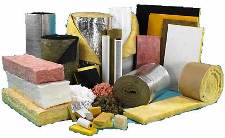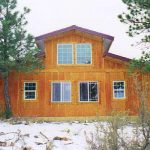Insulation is one of the topics, once brought into conversation, seems to make most folks’ eyes glaze over. Many know enough to ask about R Value, and understand “the higher the better”. Or so they think. Sometimes you need to stop a minute and go back to the source of what I call “the need”. This is the way I teach our Building Designers, and clients as well, to think about any feature or addition to their pole building kit when they design their new building. What are you going to need for your building? Don’t just throw a bunch of stuff in and on there because it “my neighbor put it on his building”. What are your needs? Obviously we all choose features we want on our building, “just because”. Just because it looks nice, gives the building a classier look, a lower profile, or we think the eagle on the weathervane hovering over the cupola is “pretty cool”. This is all well and good, but insulation is not one of those “pretty parts” of a building. Necessary yes, but what type and where do you put it?
 When I designed my most recent pole building for my own use, I researched several types of insulation, and ended up using not one or two, but three different types of insulation, and each of them for their own specific purpose in relation to cost. In other words, “what is the cost value” for each of them?
When I designed my most recent pole building for my own use, I researched several types of insulation, and ended up using not one or two, but three different types of insulation, and each of them for their own specific purpose in relation to cost. In other words, “what is the cost value” for each of them?
The types of insulation I looked at ranged from what most folks think of when you say “insulation”: fiberglass insulation, to foam board, spray on foam and B.I.B.’s (Blow in Blanket) along with the reflective type vapor barrier insulation in various configurations and applications. I ended up putting reflective radiant barrier under my roof steel, wrapped my entire outside of the building in a reflective radiant barrier, put reflective radiant barrier under the heated concrete floor, fiberglass insulation in the interior walls, and then B.I.B.’s in the exterior walls. Wow, I hear clients saying, “How do you know what to put where?” Easy – once again it goes back to the “need”. Over the next couple of days I will cover a few of the insulation choices out there, so get out a sheet of paper, make yourself a grid, and next time you need insulation, ask yourself these easy questions to decide “which insulation you are going to put where” in your new pole building.
First question, what is R value? For those of you who are not familiar with R values, it is simply the measure of resistance to heat flow. R-1 is equal to the resistance of a 1” thickness of wood. Insulation materials have tiny pockets of trapped air. These pockets resist the transfer of heat through material. The ability of insulation to slow the transfer of heat is measured in R-values. The higher the R-value, the better insulation’s ability to resist the flow of heat through it. Before you consider these products, read the test reports carefully. In order to achieve the full promised values, the products must be installed in the center of an appropriate dead air space.
Second question, what are you going to be using your building for? This will help you to determine what type of insulation you are going to need. Of course, your “need” for insulation also depends on where you live. If you are in Minnesota where I have my newest building, and want to change the oil in your car in January, putting reflective radiant barrier in the roof and even on the walls is probably not going to keep me warm. No heating system is going to keep up with the heat pumping out of my building!
And, if you live in Knoxville, Tennessee and are OK working in your shop with coveralls on a few hours a week, your insulation answer will be greatly different than if you want to sit in your new shop in your shirtsleeves with your buddies watching the Super Bowl come January!
So your first project is this: take a sheet of paper and write down all the things you want to “do” within the confines your new building, including keeping pets, horses, or other animals at the right temperature. Also make a list of other reasons we put insulation in spaces – noise for one. Do you need good sound abatement for the “practice garage” for your son’s rock and roll band? Is the loft bedroom right above where you work on motors or have a workshop with noisy machinery?
Once you decide on what your needs are for insulation, you can just match it to the Insulation Grid we’ll be making over the next several days. I’ll be back tomorrow to start with the simplest of all insulation: reflective radiant barrier which includes a vapor barrier. Winter is coming, so stay warm!










A Vapor Barrier is important in a crawl space or under the slab to reduce water vapor transmission. This water vapor also helps in insulating.
putting metal tin over garage sidewalls -where masonite siding was used ! should i install “tyvek” before installing the tin ??
If your building does not have housewrap under the masonite, then yes you should add it under the wall steel.